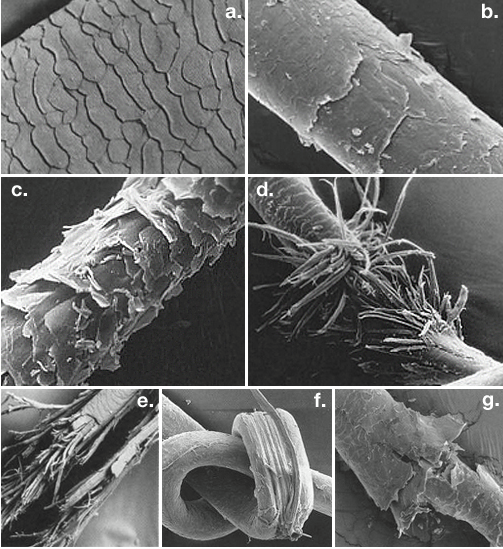|
How to Avoid Mildew in Your Hair (and How to Remove It)
by: Sabrina Perkins Our scalp is skin but it is some of the thickest skin on our bodies and it carries more blood than the rest of our body. It also contains sebaceous glands that produce sebum and that sebum protects the hair. Now, we worry about keeping our hair clean but we also have to keep our scalp clean, and according to the Mayo Clinic, there are even forms of hair loss attributed to scalp health. Mildew and hair A problem some curly, coily, locked, and wavy girls may face is mildew or fungus. Mildew is a surface fungus often gray or white in color and often found in damp or moist areas. It gives off a musty smell and it can be found in your house, on fabrics, and yes, even your hair and scalp. This often occurs in hair and scalp when wet hair is left unable to dry for extended periods of time. The moisture that gets trapped in the hair can breed mildew and hairstyles more prone to this would be buns, ponytails, updos, or even locs although people who sweat heavily in their hair may also suffer from this. The air needed to dry the hair properly is not able to get through to the wet hair and often they notice something is wrong by the musty smell. How to avoid it Since this is an issue for a professional I tapped on the shoulder of American Board Certified Haircolorist and hairstylist Monaé Everett for some assistance. Monaé advises to “avoid scalp mildew by completely drying your hair after shampooing, wetting, or sweating. People who have very thick hair or sweat excessively in the scalp have to take special precautions to fully cleanse and dry their hair. It is more reliable to apply heat to dry very thick hair than to allow hair to dry overnight. If you sweat excessively on your scalp, consider cleansing your scalp with an astringent such as Sea Breeze. Sea Breeze removes dirt, certain types of dandruff, and oil from the scalp and skin without the worry of over drying (the scalp). Simply spray it on the scalp and rinse. This is also a great way to cleanse the scalp if you have braids, locs, or sewn-in hair extensions. This method helps those who have a difficult time getting all the way to the scalp during a shampoo or those who don't fully rinse the product from their hair. Other natural scalp cleansers include apple cider vinegar and lemon juice. How to remove it Clarifying shampoos or medicated shampoos may need to be used to ensure all the mildew is gone, but proper drying of the hair and scalp is essential to fixing it. Here is a common DIY remedy for this problem. DIY Mildew Hair Removal Spray
Mix in a spray bottle and spay the solution throughout your hair and scalp, especially where the mildew is concentrated. Leave it on for 20 to 30 min. and then shampoo your hair. Adding a few drops of tea tree oil to your shampoo may also help and I used that when I was suffering from dandruff and it worked like a charm. Look, this is an ugly topic but a real one and if you find yourself suffering from mildewed hair and scalp, then fix the problem by allowing your hair to dry properly. Knowledge is power! Have you suffered from mildew hair or scalp? What did you do to get rid of it?
0 Comments
Turns out, science has an answer. Most people think the collar and cuffs automatically match up, but hair is more complex than that so says Petra Haak-Bloem, specialist at the Dutch national information centre for genetics and hereditary traits.
“The genes that determine hair color are so-called ‘incomplete dominant hereditary traits.’ This means that there isn’t one single gene that’s dominant over the rest, but all genes influence each other,” This allows for the hair on your head, your facial hair, and your pubes to differ in colour. Madness right? “Generally speaking, people inherit hair color not only from their parents, but also from their grandparents and earlier ancestors. So it’s entirely possible that one distant ancestor had a hair color that suddenly appears again though a certain combination of genes—and that can be quite unexpected for parents,” Haak-Bloem continued. But why all the annoying red hair coming through in men’s beards? “More than a decade ago, researchers discovered that one gene (MC1R) on chromosome 16 plays an important part in giving people red hair. MC1R’s task is making a protein called melanocortin 1. That proteine plays an important part in converting pheolmelanine into eumelanine,” Haak-Bloem tells us. “When someone inherits two mutated versions of the MC1R-gene (one from each parent), less pheomelanine is converted into eumelanine. The feomelanine accumulates in the pigment cells and the person ends up with red hair and fair skin.” So the unexpected red beards are a mutation in the MC1R gene. When you only have one mutated MC1R, red hair can appear in certain often unwanted places. While it definitely won’t kill you, having some stray red hairs creeping through into your beard isn’t a look most men want. Sadly though, genes are genes, and there just ain’t no fighting it. Sorry gents. * Almost 2 out of every 5 men in the world have a red tinge to their beards. Weirdly it’s not just the Irish. Coconut oil has been shown to effectively penetrate the hair shaft and help prevent damage.
It can be very heavy, though! I recommend warming up a pea sized amount between your hands and then rubbing it through the ends of your hair. It seems to work best when your hair is nice and dry - if it's wet the coconut oil will have a hard time sinking in. If you have super fine hair, it might be a good idea to do it as an overnight treatment and wash your hair in the morning. Thicker hair can use coconut oil as a nice leave in conditioner, though! Also: if you go multiple days between washings and you get frizzy ends, a teensy bit of coconut oil can help calm them down a bit. * Unrefined coconut oil is normally a very bright white color and quite solid at room temperature. This type of coconut oil is often called "virgin" or "extra virgin". It smells and tastes very strongly of coconut. This is the preferred coconut oil type for all beauty/body applications because it is less processed. 3/28/2016 The Many Faces of Hair DamageThe Many Faces of Hair Damage
A. Healthy hair This is healthy hair. In a perfect world our hair under the microscope would look like this all the time. The cuticle (the outer layer) lays smooth with all of its “scales” lined up and flat, one on top of the other. Flat cuticles = smooth surface. Smooth surface = light reflection. Light reflection = more SHINE! But…it’s not a perfect world… B. Slightly raised cuticles This is what the average person’s hair looks like if they use a blow dryer. The other cause of slightly raised cuticle can be towel drying. When towel drying it’s important to be gentle, not rough. Work your way down the hair or gently scrunch it if you’re going for waves. C. Extremely raised cuticle. Main causes of this damage are bleaching, over-processing with color, over-styling with heat, using too many alcohol based products in conjunction with heat styling, shampooing and not conditioning, etc. When your cuticle looks like this, your hair will appear dull, and lifeless because it can’t reflect shine when the surface is broken up. If you don’t change your routine, you’ll be looking at breakage very soon. D. This hair WILL eventually break off. This is most likely caused by harsh detangling. Never rush through a knot. Take your time and comb it out slowly. We also recommend getting knots out with a brush instead of a comb. Sometimes the single row of teeth on a comb can actually tighten the knot. We always work knots out slowly with a brush. Another major cause of this is yanking out a ponytail holder. Stop yourself and work the tangle around the ponytail holder out slowly. Sadly, once this has happened in the middle of a piece of hair, it’s definitely coming off. Collect a bunch of these and you’ve got yourself a nice case of the fly-aways! E: This is a split end This is the enemy!! Just knowing what split ends look like will help you understand how they get stuck on each other. They’re like claws that can grab onto one another causing tangles. Tangled ends cause even further damage. It’s important to get them off regularly. F. This is knotted hair. If not properly and carefully brushed out, a knot will lead to “Example D.” If you gently brush it out, you can avoid that. G. Shattered hair shaft. This can be caused by a bad application or rough removal of extensions. Another cause could be a bad perm (solution, the way it’s wrapped and how it’s processed). Not sure too many of you are getting perms, but if you are, please be sure to visit someone who specializes in that. Not just someone who will say yes because they want to make the money from the service. If you have extensions, make sure the person doing them is gentle, takes their time and isn’t too aggressive with your delicate hair! |
Hair by BrianMy name is Brian and I help people confidently take on the world. CategoriesAll Advice Announcement Awards Balayage Barbering Beach Waves Beauty News Book Now Brazilian Treatment Clients Cool Facts COVID 19 Health COVID 19 Update Curlies EGift Card Films Follically Challenged Gossip Grooming Hair Care Haircolor Haircut Hair Facts Hair History Hair Loss Hair Styling Hair Tips Hair Tools Health Health And Safety Healthy Hair Highlights Holidays Humor Mens Hair Men's Long Hair Newsletter Ombre Policies Procedures Press Release Previous Blog Privacy Policy Product Knowledge Product Reviews Promotions Read Your Labels Recommendations Reviews Scalp Health Science Services Smoothing Treatments Social Media Summer Hair Tips Textured Hair Thinning Hair Travel Tips Trending Wellness Womens Hair Archives
June 2025
|
|
Hey...
Your Mom Called! Book today! |
Sunday: 11am-5pm
Monday: 11am-6pm Tuesday: 10am - 6pm Wednesday: 10am - 6pm Thursday: By Appointment Friday: By Appointment Saturday: By Appointment |





 RSS Feed
RSS Feed